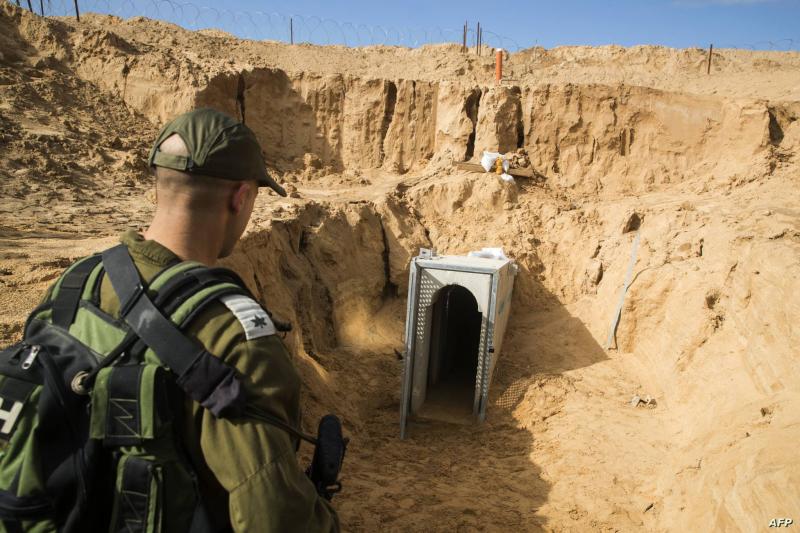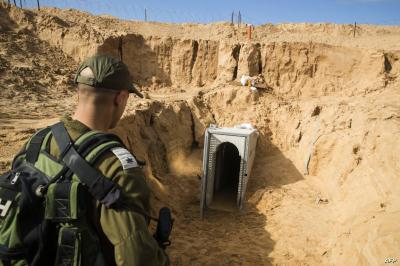Military experts have confirmed that Israeli forces are moving slowly in their ground assault on Gaza for reasons including keeping the door open for potential negotiations with Hamas to secure the release of over 200 hostages. The relative caution exhibited by Israeli forces in controlling and securing parts of the densely built-up areas in Gaza contrasts with the continuous airstrikes on the coastal enclave over the past three weeks and also differs from previous Israeli ground assaults there.
An assessment from three Israeli security sources stated that the decision not to directly invade the most densely populated areas of Gaza with full force aims both to wear down Hamas leadership over a prolonged campaign and to leave a window open for a possible agreement regarding the hostages held.
Prime Minister Benjamin Netanyahu stated last week that the recovery of the hostages is an "integral" part of the military's objective in Gaza. So far, Hamas, the militant group governing Gaza, has released four civilian women out of 239 individuals believed to be held captive, many of whom are in a deep network of tunnels. The Israeli military announced on Monday that its forces freed an Israeli soldier from Hamas captivity during the ground operation in Gaza.
A former senior commander, who preferred to remain anonymous, noted that by advancing slowly, the military also hopes to secure Israeli troop positions and lure Hamas fighters out of the tunnels or densely populated urban areas to engage them in more open terrain where they can be more easily targeted. A spokesperson for the Israeli military declined to comment on the specifics of the operation due to its sensitive nature.
Amos Yadlin, the former head of Israeli military intelligence, told reporters, "Step by step, meter by meter, in an attempt to avoid casualties and kill as many Hamas terrorists as possible."
The Israeli response has been forceful following the incursion by Hamas fighters into Israel on October 7, which resulted in the deaths of 1,400 people, most of whom were civilians, marking the deadliest day in Israel's 75-year history. Israel claims that 239 individuals are being held hostage in Gaza, where they are believed to be inside Hamas's extensive tunnel network.
In the three weeks following the Hamas attack, Israeli airstrikes have devastated large areas of Gaza, resulting in over eight thousand deaths, including more than three thousand children, according to health authorities run by Hamas in Gaza. Hamas leaders have stated that a ceasefire must occur before the release of civilian hostages, some of whom Israel claims hold passports from 25 different countries.
In 2011, Hamas negotiated the release of over a thousand Palestinian prisoners in Israel in exchange for one Israeli soldier. Increased international pressure regarding the situation in Gaza led major powers last week to call on Israel to allow for a "humanitarian truce" for aid delivery and for the release of hostages. In the first publicly announced disagreement between Israel and its allies since October 7, Israel rejected these demands, asserting that any cessation of fighting would benefit Hamas.
Former Defense Minister Benny Gantz, currently a member of the war cabinet led by Netanyahu, stated on Saturday, "In this war, there is no ticking diplomatic clock." Defense Minister Yoav Gallant indicated that the war would be prolonged and that Israel is striking Hamas "above and below ground, from the air, land, and sea." Netanyahu did not describe the ground incursion on Saturday as a large-scale invasion.
After mobilizing hundreds of thousands of soldiers, including reserve forces, along its border with Gaza, Israel executed its first continuous ground incursion in the operation on Friday. An Israeli military spokesperson noted that the government provided two objectives for the military: to dismantle Hamas, which includes destroying its infrastructure and field capabilities, and to free the hostages.
Tanks and armored personnel carriers, backed by helicopters and drones, advanced into the semi-rural area north of Gaza City, the main urban center of the enclave. Local residents and the Shehab news agency, affiliated with Hamas, reported on Monday that forces also moved south from the city, threatening the Salah al-Din road, a major transport artery running the length of the 40-kilometer enclave. Fighters and residents stated that tanks encountered resistance along the route. The Israeli military said it would not provide details about the locations of its forces.
Abu Ahmad, a spokesperson for the Islamic Jihad group allied with Hamas, claimed that Israeli forces had not succeeded in achieving any sustainable breakthroughs, except for progress in open areas. Israel has trained for the tunnel risk scenario, describing Hamas's extensive tunnel network in Gaza as an underground city containing missile launch sites, command centers, and attack routes targeting Israeli forces.
Major Omri Attar, from reservist forces in a special operations unit, stated that ground troops have also trained to identify air shafts and escape routes leading to tunnel openings and to place explosives inside to seal them off. He noted that specialized units within the combat engineering corps, which have previously utilized robots and dogs, will deal with any combat within the tunnels.
"We're faced with a very complicated situation, and I'm not talking about casualty counts or hostages, but specifically about the infrastructure of the underground city, the tunnels, which is extremely sensitive." This approach differs from previous attacks on Gaza, primarily urban areas that house 2.3 million people, which faced Israeli assaults in 2008, 2014, and 2021 targeting Hamas and Islamic Jihad.
In 2008, Israeli forces entered building areas with overwhelming force, prompting Hamas to withdraw and engage sporadically. Israeli military forces are aware of the risks posed by densely built-up areas in Gaza and the dangers of deploying large troops. Highlighting those risks, Israel lost nine soldiers during its incursion in 2008. The death toll rose to 66 Israeli soldiers in 2014.
According to the latest data released by the Israeli military, since October 7, 315 Israeli soldiers have died, mostly during early Hamas attacks. Ben Milch, who was a commander in the combat engineering corps in 2014 and tasked with tunnel destruction, stated that their mission then was to advance no more than two kilometers into the network.
He told Reuters, "We only had to destroy dozens of tunnels, but the challenge today will be hundreds of tunnels and many kilometers—an actual fortress built underground by Hamas." Clearing the tunnels faces further complications due to the hostages being held and the need to make decisions about closing ventilation shafts.
Milch stated, "In my view, this is why the Israeli army is following a slower, more methodical approach to ensure it covers all their bases and removes the tunnels as it progresses to avoid being ambushed from behind or the side and so on." He added, "We don't want to lose soldiers, so we'll move slowly and make sure to minimize casualties as best we can."




